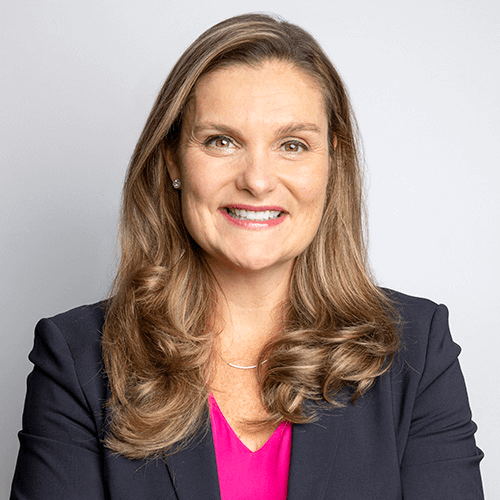The evolution of sustainable finance
The rise of transition-labelled finance and the emergence of a sustainable equity offerings could mark the next stage of evolution for sustainable finance, says RBC Capital Markets’ Lindsay Patrick, Managing Director and Head of Strategic Initiatives and ESG.
Patrick participated in a discussion at the 2022 KangaNews Sustainable Debt Summit that looked at the emerging trends in sustainable finance and ESG reporting.
The panel explored mandatory disclosure regimes, new product development including sustainable equity and social issuance and finally were asked their insights into what the next 12 months may hold.
Does regulation matter?
The panel discussed the SEC’s (Securities and Exchange Commission) proposed climate disclosure guidelines announced earlier this year. The guidelines aim to enhance and standardise the climate-related disclosures provided by public companies including both domestic and foreign private issuers and the panel were asked what the implications were for Australia.
The panel agreed that they expected that Australia will introduce a mandatory disclosure regime and that this would bring harmonization. They argued that that it isn’t possible to have a credible target, or the strategy to meet it, if there aren’t climate and ESG disclosures in the first place.
Patrick added that, regardless of whether Australia implemented mandatory reporting, the market would demand best practice disclosure from the corporate sector.
“We’re going to have international sustainability standards, which, we believe, will be adopted by the international security regulators,” she said.
“The General Requirements and Climate exposure drafts from the ISSB (International Sustainability Standards Board) will be finalised at the end of the year and potentially could be implemented in some jurisdictions at the start of next year.”
“Companies will have to demonstrate to they’re meeting those standards if they want access to global capital.”
The next frontier in product development
The panel explored the evolution of Australia’s sustainable finance market, including use of proceeds debt and the adoption of sustainability-linked debt, as well as broader sustainability frameworks that allowed borrowers to manage multiple financing instruments.
As Australia adopts its first ESG derivatives, panellists discussed what other products may lie on the horizon. Eliza Mathews, Head of Sustainable Finance at Westpac, believes this will be guided by customer need and what the borrower is trying to achieve.
“The purpose of sustainable finance is to mobilise capital to meet a company’s national and global sustainable development goals,” she said.
“The sustainability strategy of the customer is the driver, and products will keep getting invented to solve those individual needs.”
The panel agreed that the growth of sustainability-linked products did not sound the death knell for green bonds and loans. While use of proceeds is the most understood product in the market and this may change over time both products can co-exist.
Courtney Alexander, Vice President, TD Securities, believes flexibility was paramount and further innovation inevitable however, she was cautious about what this may look like.
“We need to be careful about saying merged or hybrid use of proceeds and sustainability-linked debt frameworks are best practice,” she said.
“We run into situations where sustainability-linked debt borrowers may not be suitable candidates for a green bond, and vice versa.
“It’s going to come down to your financing and sustainability objectives, your funding profile and your business model.”
The Holy Grail of sustainable equity
Patrick argued a genuine market breakthrough would be the creation of a label around green or sustainable equity.
“It’s going to be a lot harder to achieve but it could potentially unlock an entirely new pool of capital,” she said.
“It will depend on how the world evolves around measuring impact and outcomes, whether you can do that on a holistic basis or whether you need to look at it on a project-by-project basis.
“One of the key benefits of use of proceeds instruments is that it’s very clear what the outcomes are and how you measure that impact, much clearer than for sustainability-linked or broader equity portfolios.”
“But it would be a real game changer if we could get market consensus on what characterises sustainable equity.”
What about the S?
The market has seen a strong focus on the E in ESG, with G seen to be sitting over the top of the industry, the panel were asked if they saw S as the next frontier and what is the scope for products aligned with social performance?
The consensus was that while social products had not received the same attention as environmental products, there was an appetite from both issuers and investors to incorporate social KPIs into transactions.
Patrick observed that the broader question for market participants was whether to approach ESG on a thematic basis or according to the issues affecting each sector.
“If you’re a regulator or a standard setter, do you consider the big common themes you think are universally applicable or do you focus on those factors that are most material to a particular industry or sector?” she asked.
“We’re not going to see the same thematics emerge as we did with emissions and decarbonisation, so we need a much broader lens of what issues have financial materiality to companies and the sectors they’re operating in.”
What will we be talking about in 12 months?
Asked what they saw as the emerging trends over the coming year the panel offered a diverse range of opinions including biodiversity finance, carbon markets and a common framework and labelling for the path to green.
Patrick added that transition-labelled finance targeting hard-to-abate sectors was another potential growth area. She noted the recent establishment of the Brookfield Global Transition Fund aimed at transforming carbon-intensive businesses, which closed at $US15 billion, twice its original target.
